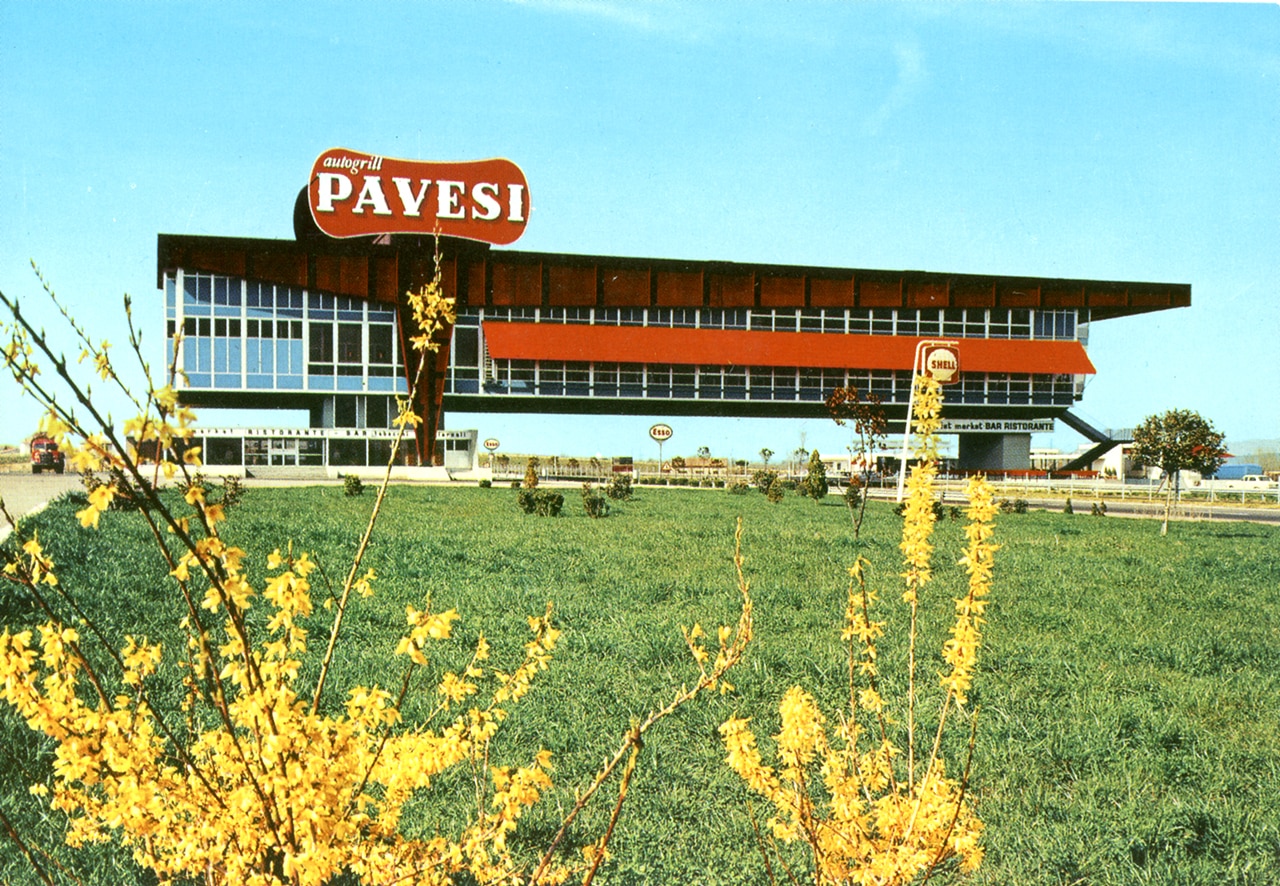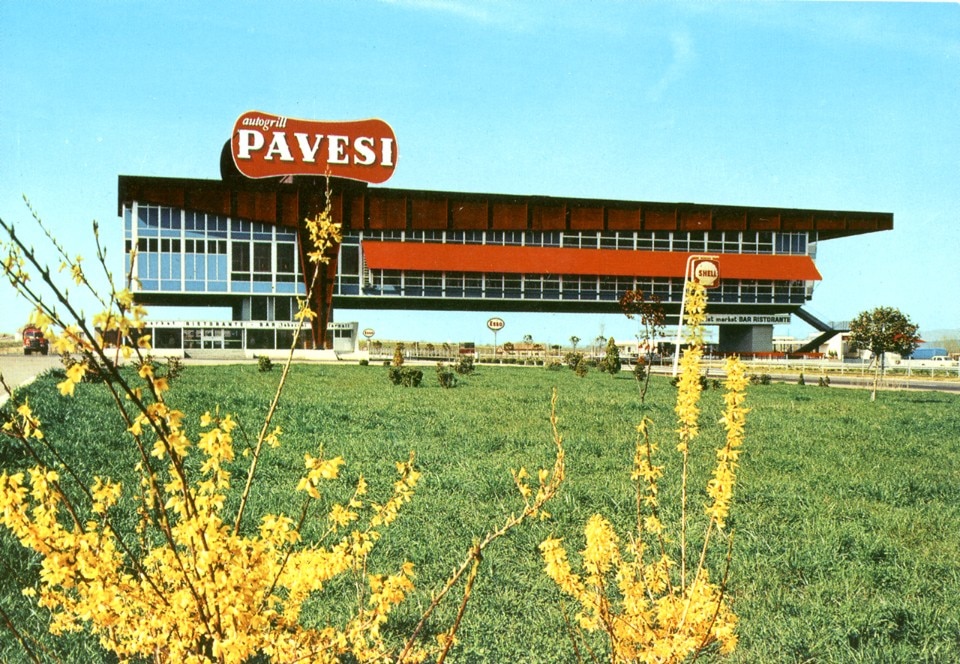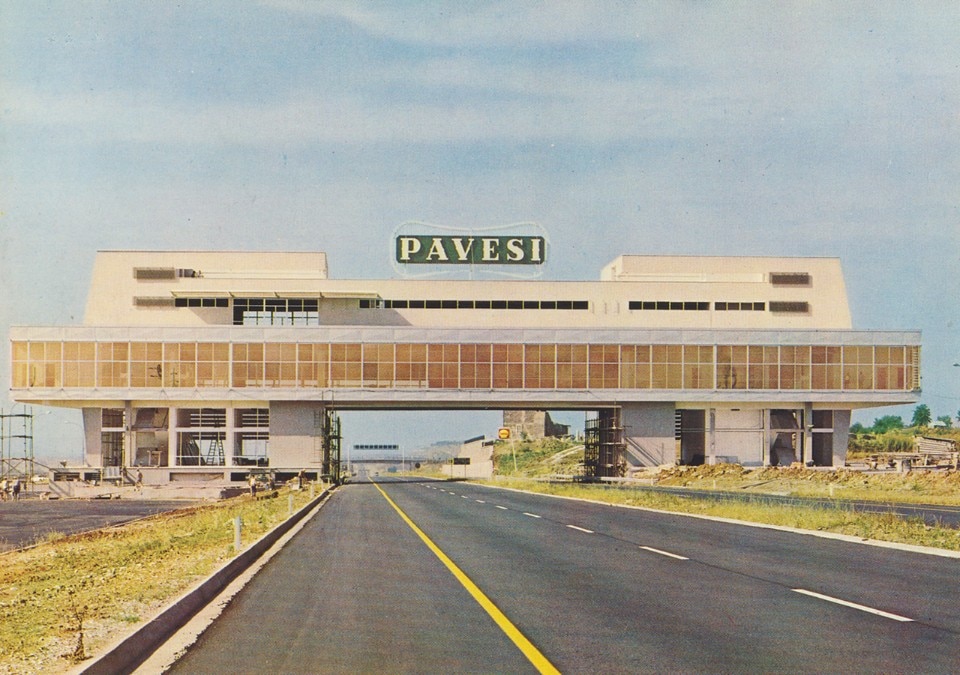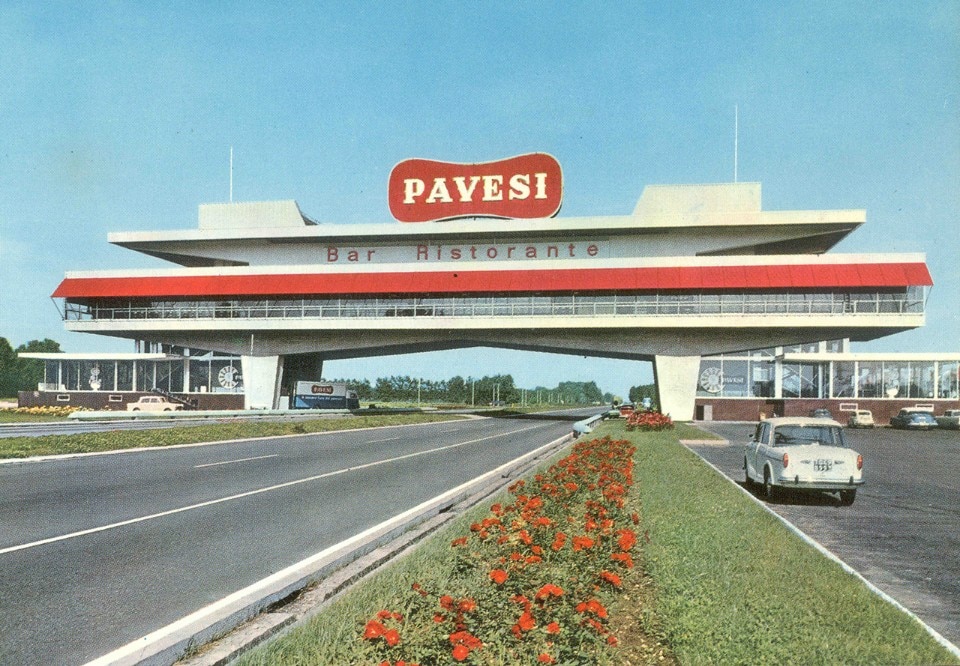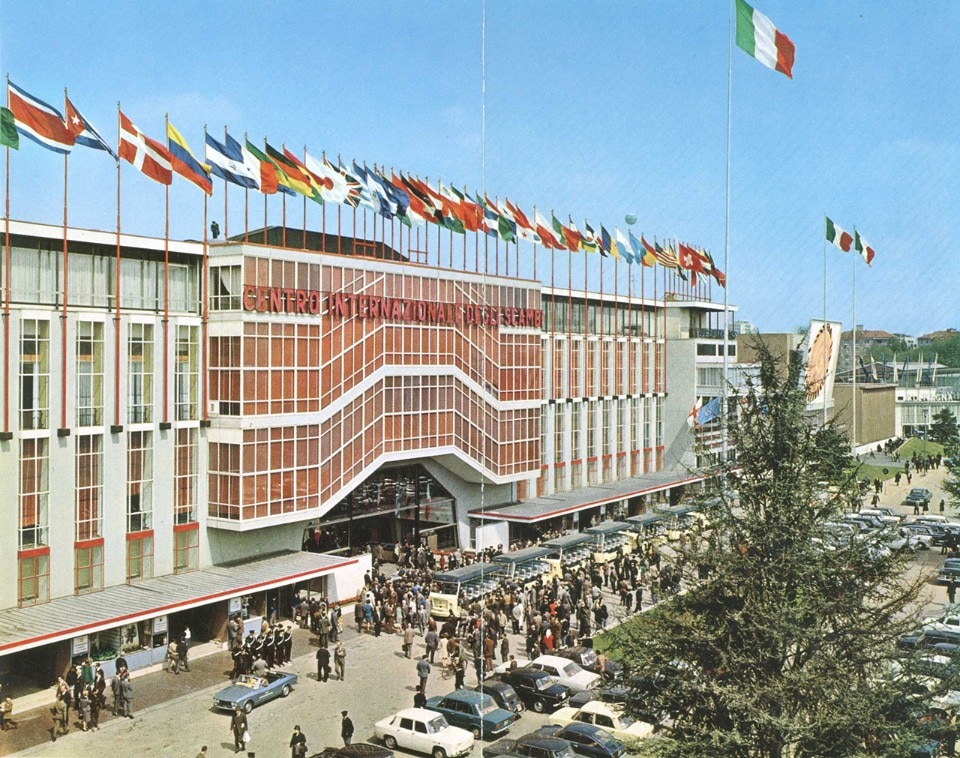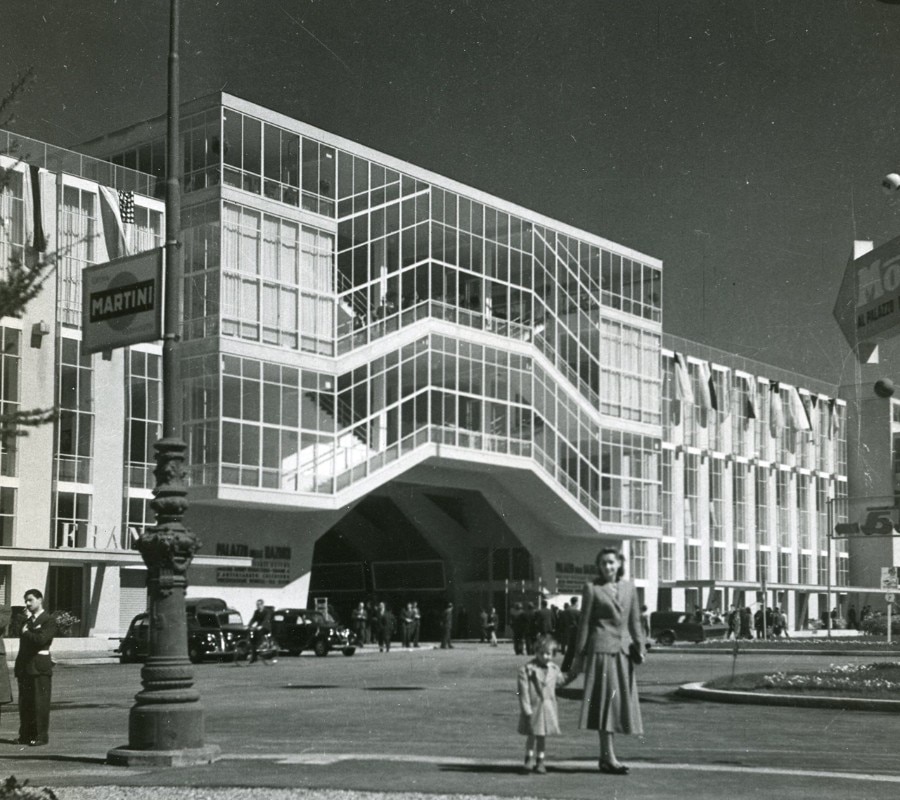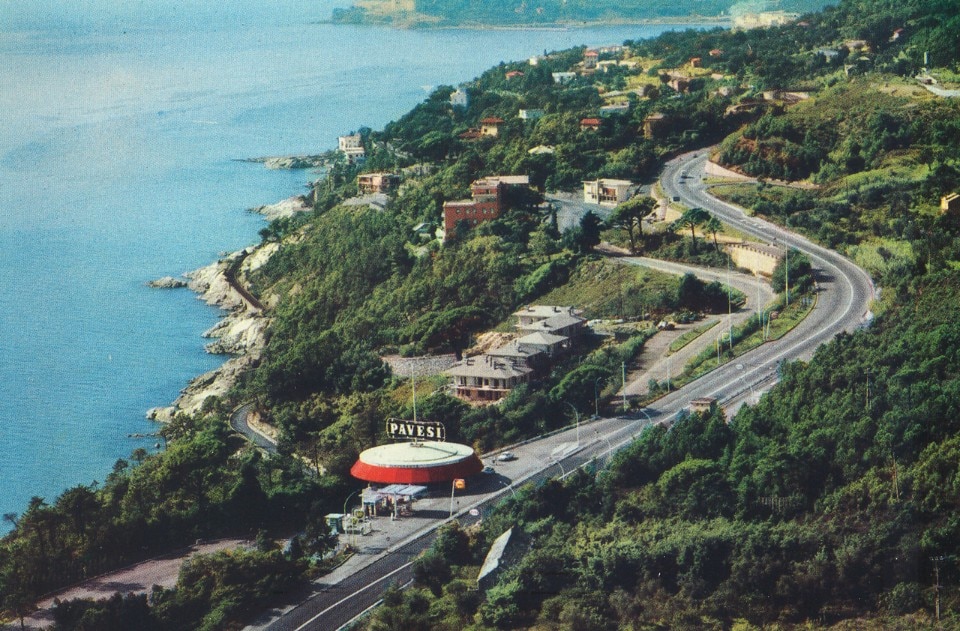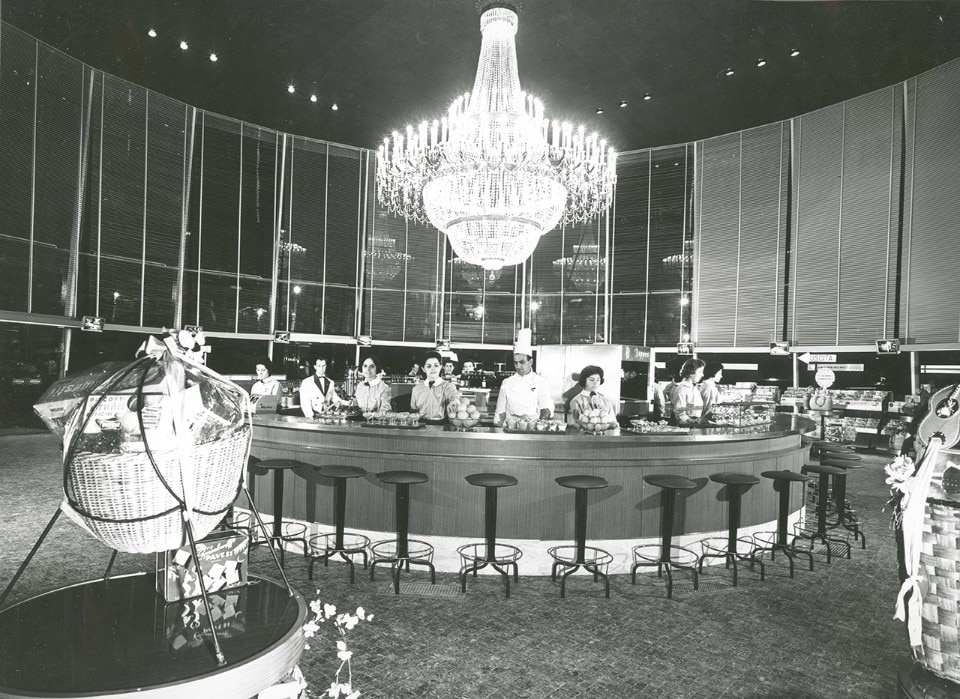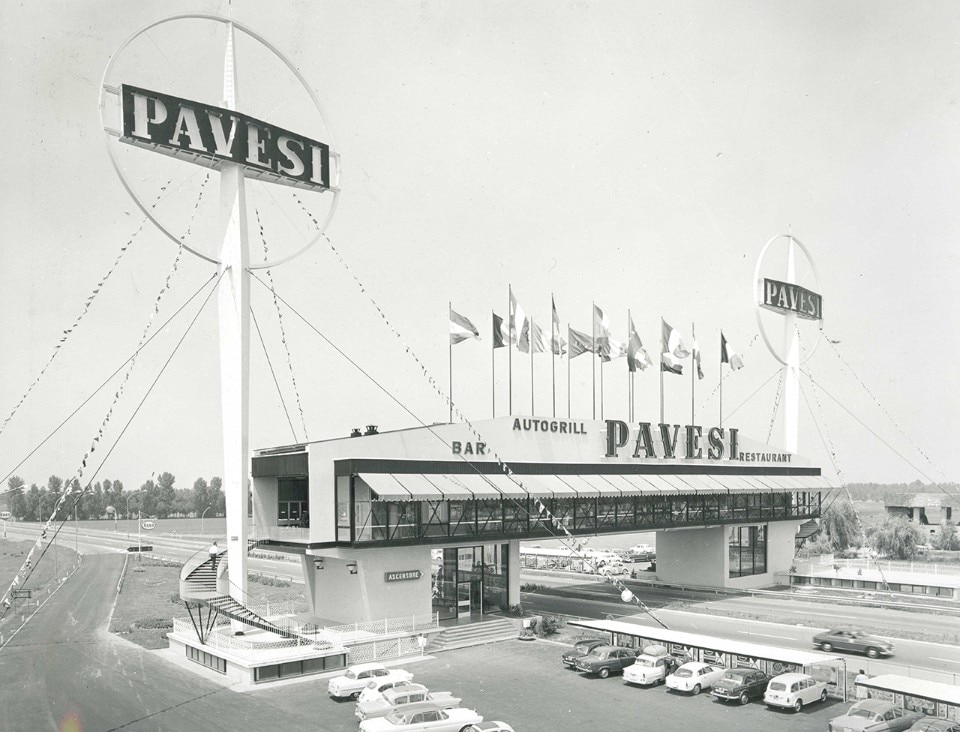Alberto Arbasino’s writing style, as brisk and restless as it can be, would be of great help to recount the story of Italian autogrill. This tale would indeed be better narrated through the exuberant prose of its novel La Bella di Lodi, whose main character embarks in her agitated love transgressions precisely along highways and service areas. As a matter of fact autogrill’s rise and “heroic” period last no more than a summer romance, or than Italy’s economic “boom”, to put it more prosaically.
Crucial steps of this truly Italian adventure all relate to the construction of national highways: in 1955, the Romita Law launches an ambitious ten-year plan for the completion of the network; the whole Autostrada del Sole (literally the “Higway of the Sun”), between Milan and Naples, is inaugurated in 1964; since 1973, the oil crisis cools any enthusiasm and scales down investments.
Amongst the most brilliant protagonist of this short-lived saga are Mario Pavesi (1909-1990), an industrialist from Novara, better known for lending his name to the popular “Pavesini” biscuits, and Angelo Bianchetti (1911-1994), a Milanese designer trained as a rationalist, and specialized in fair pavilions and advertising architectures. They are the inventors of bridge-type autogrill, possibly the most beloved of Italian infrastructures from the second half of the 20th century.
Pavesi builds on the success of its first highway store, opened in 1947 on the Milan-Turin branch, in the vicinities of his Novara factory. At the end of the 1950s he commissions Bianchetti the autogrill in Lainate (1958), Giovi (1959) and Varazze (1960), three circular-plan kiosks framed by monumental metal exostructures – except in part for the latter, as available space was very scarce along the Autostrada dei Fiori (“Highways of the Flowers”) already at the time.
Bianchetti revisits the well-tested typology of the event pavilion, which he is very familiar with. Here he adapts it to a different program, as a retail store and restaurant, and above all to the very unusual context of the expressway. Visibility is considered as a key feature: of the autogrill itself, which car drivers can glimpse from a distance as a jolly corporate landmark; and from inside the autogrill, fully glazed to allow its users to contemplate not as much the landscape as the show of cars speeding on the straight stretch of road nearby. Bianchetti builds a total of 70 autogrill of this type over a two-decades period, until 1977.
The best, though, is yet to come. In 1959 Bianchetti and Pavesi travel together through the United States. They can take a close look to the restaurants of the Howard Johnson’s chain, and more importantly to the Oasis service areas, designed by Pace Associates for the Illinois State Toll Highway Commission starting from 1956. The Illinois car driver’s “oases”, such as the well-known Des Plaines Oasis Station (1956-1958, now demolished), are bridges crossing the road and accessible from both its lanes.
The America road trip proves very useful precisely because Bianchetti and Pavesi are working simultaneously on a similar building: on December 23rd, 1959, the pair cut the ribbon of the bridge-type autogrill in Fiorenzuola d’Arda, a premier for Europe, surfaced in a few months from the Po Valley flat, foggy board. While a certain inconsistency exist between different sources, it can be claimed that the typological intuition happened at the same time on both sides of the Atlantic Ocean.
On the one hand, Bianchetti had outlined its main morphological features with his Palace of Nation at Milan’s Fiera Campionaria, whose first drawings date back to 1948. On the other hand, the American examples provides valuable clues to define the interiors’ arrangement and the technical equipment of a service areas which aims at being and looking quintessentially modern. As Paolo Scrivano explains in Building Transatlantic Italy. Architectural Dialogues with Postwar America (2013) the furniture layout and the kitchen area of the American model are reproduced virtually with no variations.
Bianchetti builds 11 bridge-type autogrill, all of them for Pavesi, based on a metal or reinforced concrete structure, and all sharing a similar layout. Retails areas are on the ground floor, while the panoramic restaurant is elevated, as a dramatic belvedere on an artificial landscape made of streamlined chassis and of the smoothest asphalt. Remarkable formal distinctions are introduced: in Novara (1962) overhanging slabs emphasize the bridge’s horizontal extension; in Feronia (1964) the autogrill consists of the superposition of compact volumes, more or less transparent; in Montepulciano (1967), an impressive corten steel structural beam shows a single point of support, on the side of the southbound lane. A trademark common to all are their orange shades, now unfortunately for the most part removed.
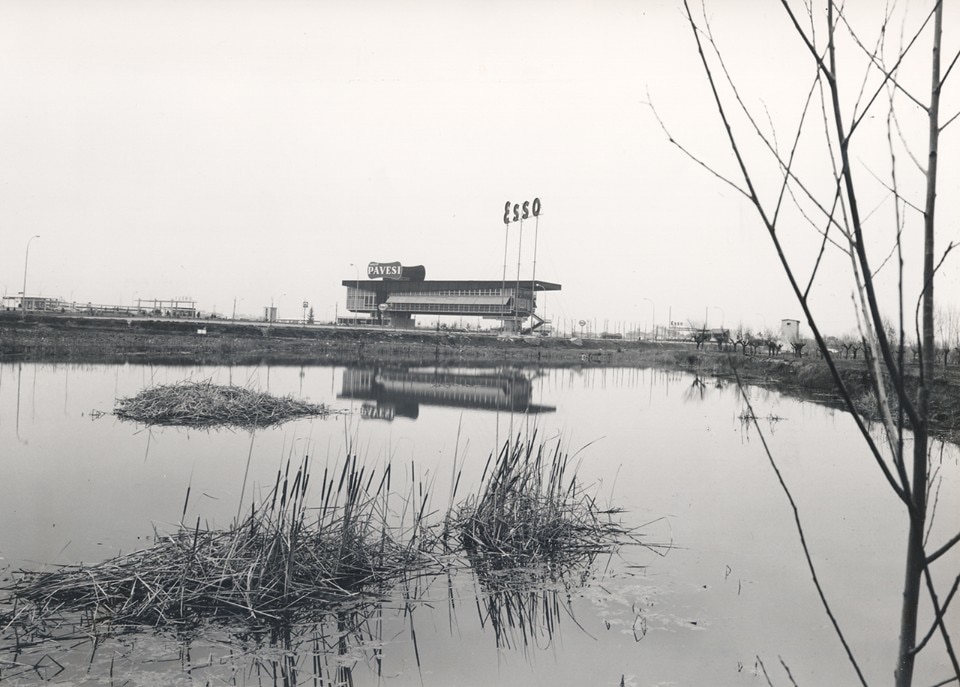
The success and imitations of Pavesi and Bianchetti’s bridge-type autogrill multiply in the 1960s. For the quality of the results, it is worth mentioning at least the mottagrill, the product of the consortium between the Motta brand and architect Melchiorre Bega. The series start in 1960 in Cantagallo, to be continued in Limena in 1965-67, in collaboration with Pier Luigi Nervi. Already at the beginning of the following decade, though, the new economic trend suggests Pavesi and other businessmen in the same sector to opt for less gigantic and expensive solutions: the curtain comes down on a typology which remains the expression of a single, unrepeatable decade.
In more recent years, the Gruppo Autogrill, now the owner of all bridge-type service stations, has proven unable, intentionally or for lack of competence, to preserve the heritage of modern structures that it inherited. The recent demolition of the pavilion in Lainate is despicable in itself, but even more so when the visionary features of Bianchetti’s late building is compared with the dullness of the contemporary “volcano-autogrill”, completed a few years ago on the other side of the highway. Let us hope that the need for energy retrofitting and other functional updates, though understandable, won’t become an alibi for further destructions.
Bianchetti bridge-type autogrill deserve to be saved for at least two reasons, amongst many others. Even when compared to several acknowledged masterpiece of Italy’s late rationalism, these architectures, cultured and yet light-hearted, almost “pirate-style” and deliberately mainstream, stand out as a much accurate testament to the age that produced them, audacious more than rigorous, hectic more than well-reasoned. Moreover, their iconic strength has made them virtually independent from the function and the aims that they initially responded to. The collective imagery has adopted and re-framed them from the field of trade and consumption to that of journey and discovery. The wish is that nobody will ever dare to deprive the Italian highway landscape of these ingenious inhabited spaceships, crosswise on the way to holidays.


